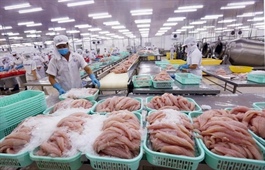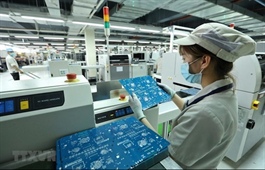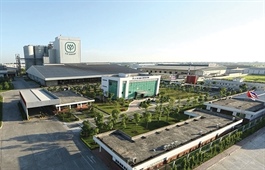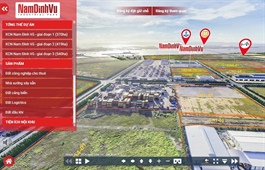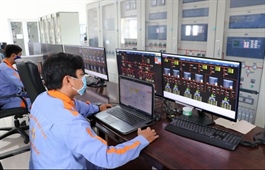Vietnam impervious to potential US cotton ban
Vietnam impervious to potential US cotton ban
Plans by the United States to ban Chinese cotton is unlikely to affect Vietnam’s garment and textile industry as a large portion of the materials the Southeast Asian nation imports come from the US.
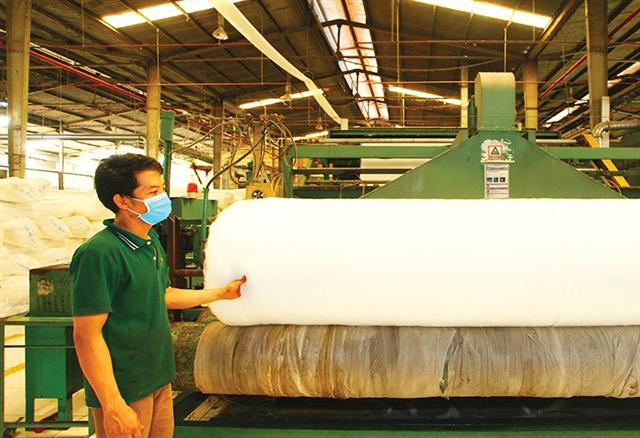
Vietnam sources the vast majority of its cotton from the US and a ban on China would have little effect on it. Photo: Le Tien
|
The Asian apparel industry breathed a sigh of relief after the US last week decided to temporarily shelve a wholesale ban on products containing cotton from China’s Xinjiang province. However, the US Customs and Border Protection (CBP) agency imposed restrictions through five separate Withhold Release Orders covering cotton, computer parts, and hair products made by a group of Xinjiang entities.
The move by the US government on import restrictions from China’s autonomous Xinjiang Uygur region were made due to concerns over the alleged widespread use of forced labour.
“The move is sensitive so we have yet to make any official comment,” Vo Manh Hung, head representative of the Cotton Council International (CCI) told VIR. “Each year China is the world’s largest or second-largest producer of cotton, alongside India. Local cotton output can’t catch up with the rising demand for raw materials for the fibre industry.”
Meanwhile, Vietnam has been increasingly sourcing cotton from the US over the last few years. In light of the growing fibre industry, many local and foreign companies have ramped up investment in the sector, including Chinese companies using US cotton for production. In addition, Vietnamese fibre manufacturers are increasingly looking for high-quality cotton that can retain its colour after dyeing. US cotton can meet this requirement, according to Hung.
According to data by the General Department of Vietnam Customs (GDVC), Vietnam imported about 900,000 tonnes of cotton from the US in 2019, accounting for 61 per cent of its total imported cotton.
“It is predicted the demand of importing cotton from the US to Vietnam will increase in the upcoming years as foreign companies, especially those from China, boost investment in yarn-dyed fields,” Hung said.
Meanwhile, Vu Duc Giang, chairman of the Vietnam Textile and Apparel Association (VITAS) told VIR that a potential import ban on all cotton from China’s Xinjiang would have very little impact on Vietnam’s textile and garment industry. Only some Chinese fibre manufacturers in Dong Nai and Quang Ninh provinces will be affected if they source cotton from the region. At present, China is the largest consumption market of Vietnam’s fibres, accounting for 45 per cent of Vietnam’s total fibre exports.
Giang believed that the growing consumption of US cotton in Vietnam will help improve the stability of fibre quality, thereby contributing to the development of Vietnam’s industry and boosting textile and garment exports to the US.
“We have proposed the government to encourage foreign-invested projects in the field of high-quality fibre production, weaving, and dyeing rather than sewing. We also warn companies to pay attention to any US ban on fibre and textiles to choose suitable material sources,” he said.
Cotton from Africa is becoming an important source for Vietnam’s fibre production too, in addition to the supplies from the US and India. In 2019, Vietnam imported cotton from 17 African countries. In 2019, Vietnam’s total import of cotton from the continent reached $203.5 million, down 19 per cent compared to 2018, according to statistics from the GDVC.
Data from the Vietnam Trade Office in Algeria shows that African cotton has a competitive price and quality, which matches Vietnam’s requirements for fibre production. Most African cotton is harvested by hand with relatively low fibre and good maturity ratio. However, due to small output, the classification process of African cotton is not as sophisticated as that from the US or other regions.
In particular, African cotton has a higher impurity ratio and sugar content than other types of cotton, which impacts production and quality.
However, the pandemic has led to a decline in global raw material price and supply. The situation has worsened due to shrinking industrial production in the US, China, and the EU. In fact, international cotton prices are at their lowest level for 11 years.
The textile industry continues to slow down, especially in Asia. Cotton prices have been hit hard by low oil prices, making the synthetic fibres more competitive than natural fibres.
According to estimates from the International Cotton Advisory Committee, since the beginning of the year, global cotton prices have fallen by about 18 per cent due to the impact of the pandemic and the closure of textile factories.
The global health crisis is also negatively affecting prices of the product imported into Vietnam. In the last week of August, the prices of imported cotton from the US declined by 0.65 per cent, Macau down 2.02 per cent; and Hong Kong fell 3.77 per cent. However, the price of cotton imported from the Indian market increased by 11.65 per cent, according to the Vietnam Industry and Trade Information Centre under the Ministry of Industry and Trade.
Vietnam has been a darling for US cotton producers. Data by the CCI shows that the US is home to 18,500 farms and over 550 grinding mills. US cotton is produced and tested under strict procedures, meeting the requirements of Vietnam’s textile industry in terms of quality and environment.
According to the CCI, around 28 Vietnamese textile and weaving factories are trusted partners of US cotton suppliers with a total registered cotton volume of about 400,000 tonnes per year. In particular, after just three years of cooperation, domestic fashion brands such as Canifa, John Henry, Ninomaxx, Onoff, and Sunfly have chosen US cotton suppliers as their partners, with 1.7 million products registered with Cotton USA labels last year.





